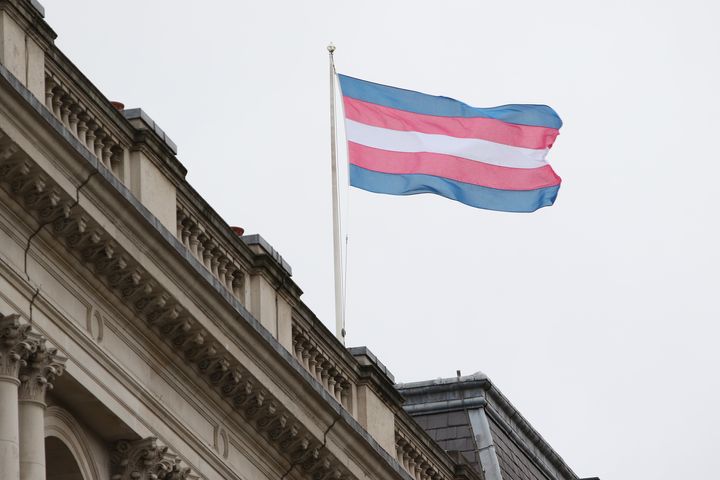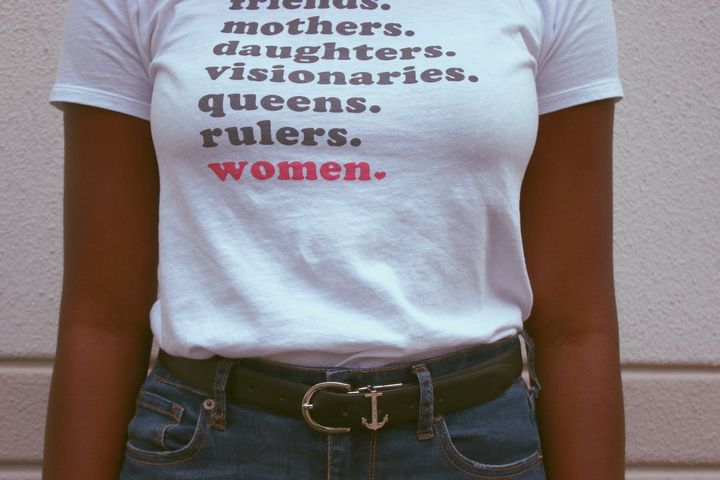Welcome to the Sex Stereotype Clinic
Stereotypes about men and women stay, sexes change.

Stereotyping is a printing technique developed in the 18th century. A stereotype is a solid plate of metal where letters and illustrations are tightly fit together to be reproduced indefinitely on paper.
Metaphorically, a stereotype is a prejudiced cliché. A preconceived and oversimplified vision of reality, a stereotype is an image that only exists in our minds. When it comes to sex, stereotypes are rigid me(n)tal plates constraining the lives of women and girls, reducing us to a mass-produced mold.
What if, however, reality was molded to fit the stereotype? Then, stereotypes would no longer be images formed in someone’s mind, but accurate observations of reality, mere photographs. Women, in fact younger and younger women — sometimes teenagers — are increasingly resorting to all sorts of surgeries to fit the stereotype of a woman. In terms of beauty standards, we went from Paris Hilton, where starving yourself to death was “enough” to emulate your idol, to Kim Kardashian whose proportions are naturally impossible to achieve.
This is a complete reversal not just because it is reality trying to fit the image, but also because perfectly healthy women are labelled unhealthy simply for not fitting stereotypes — something Naomi Wolf had seen back in the 1991 Beauty Myth. Instead of attacking the stereotypes, women are under attack.
Female stereotypes are presented as immutable to the point where they have been conflated with womanhood itself. Girls who do not want to be associated with these stereotypes, are presented as not wanting to be women at all and referred to “gender identity clinics” which are nothing but sex stereotype clinics.
Sex swaps
Women are not the only ones to be dragged into this shuffle of adopting stereotypes associated with the opposite sex, men are too. Another important trend is that stereotypes stay, sexes change. Think about stereotypes as rigid places (remember the metal plate) that people can enter and exit.
Here’s an example: the girls’ band Little Mix straight from Britain, a mass-producer of pop bands capturing the spirit of the times, made a clip in 2021, “Confetti,” where they dress up “as men.” How do we know that? Stereotypes. They entirely rely on those for their disguise. As women, they are sexualized. As men, they are sexualizing women. As women they are exposed, we see their bare skin, they’re on their knees; as men they are fully dressed, dominating.
Another example: the model Chella Man (in blue) is a woman and the actor MJ Rodriguez (in yellow) is a man, but we are supposed to believe the opposite. Why? Just because of their clothing, mannerisms, hairstyle — stereotypes.
Now, look carefully at this image:
Eurovision 2019 - one of the most popular TV shows in the world. All the major “Euro” stars are there. We are told our freedom as women, and as a society, resides in the ability for the man on the far left to dress like the woman in pink and for the man on the far right to mock the woman in pink. But look who’s in the middle? That looks like the status quo to me.
Freedom fighters
These two trends can be summarized in two claims: stereotypes are indistinguishable from sex, playing with stereotypes is freeing.
The most famous articulation of the first claim is by queer theorist Judith Butler that claims that gender makes sex in Bodies That Matter (1993). Butler does not deny human material existence, rather she argues that sex is only as relevant as the conversation about it. The best illustration of this idea, as Mari Mikkola writing about the academic debate on sex and gender rightly points, is the concept of “assigning sex at birth.” To Judith Butler, gynecologists are not simply announcing and describing the sex of a newborn, but they are prescribing it.
This idea that sexes are attributed to naturally non-sexed humans was a brilliant move for patriarchy’s never-ending metamorphosis. If you can assign sex to people, why not do so to objects as well? Once you start attributing sex, why limit yourself to human beings? Nowadays, it is far less controversial to talk of “women’s clothing” or “men bags” than women and men tout court: things, which are external to you, actual envelopes, not bodies, have become the only markers of sex.
Here we have, as feminist activist Anna Zobnina observed, the “neutral” individual, the famous genderbread/gingerbread, with detachable parts: a vagina for prostitution, a womb for surrogacy, a penis if you want to play the man, tits if you want to be a woman. Think Mr Potato Head in Toy Story but Mx. Potatx version.
In 2000, the sociologist Zygmunt Bauman foresaw everything that is going on today in his seminal Liquid Modernity:
"The experienced, lived identity could only be held together with the adhesive of fantasy, perhaps day-dreaming. Yet, given the stubborn evidence of biographical experience, any stronger glue—a substance with more fixing power than easy-to-dissolve-and-wipe-out-fantasy — would seem as repugnant a prospect as the absence of day-dreams. This is precisely why fashion, as Efrat Tseëlon observed, fits the bill so well: just the right stuff, no weaker, yet no stronger either, than the fantasies are. it provides ‘ways of exploring limits without commitment to action and without suffering the consequences’. 'In fairy tales’, Tseëlon reminds us, ‘the dream attire is the key to bringing out the true identity of the princess, as the fairy godmother knows only too well when she dresses Cinderella for the ball'."
Given the stubborn evidence of their morning erections and nocturnal ejaculations, men had to cling onto “women’s clothing” to act on the fantasy of becoming, just for one night, the cliché of a woman born through the parthenogenesis in their own mind, without having to bear any of the daily consequences.
No wonder the “gender revolution” is led by the fashion industry, great purveyors of sex stereotypes and prime example of collaboration between heterosexual and homosexual men to deliver the ready-made woman they want. Now with “trans,” the trinity is complete. Superficial accessories are key to reveal the “inner selves,” as Bauman puts it: you don’t just buy things, you shop around (gender) identities. You can buy “gender-affirming” clothing not to dress as but to become a man or a woman or a something. “You like my hair? Gee, thanks, just bought it” sings pop star Ariana Grande. “I also had recently purchased a new vagina” writes author Andrea Long-Chu in Females. It’s not sex that sells, it’s men that buy the female sex. They had prostitution, now they have surgeries.
Zygmunt Bauman then cites sociologist Harvie Ferguson:
"in the postmodern world all distinctions become fluid, boundaries dissolve, and everything can just as well appear to be its opposite; irony becomes the perpetual sense that things could be somewhat different, though never or fundamentally radically different (...) the ‘age of irony’ passed to be replaced by an ‘age of glamour’ in which appearance is consecrated as the only reality…"
It’s no longer these poor internal and invisible chromosomes, and definitely not the sad incomplete XY ones that determine sex — it’s your makeup. The image of a woman is all there is to a woman: she’s shallow, there’s nothing beyond her looks, nothing substantial — actually, no, appearance is substance, the umpteenth reversal.
If all sounds too abstract or far-fetched, read this: in a recent court case against Miss USA a man called Anita Noelle Green argued “I am a biological female because I am stereotypically feminine” to be admitted to the beauty pageant. In Butlerian thinking, sight is just as important as discourse in determining sexes.
Spot the difference Above: a still from Cardi B’s clip “WAP” [Wet Ass Pussy]. Below: a picture from RuPaul’s Drag Race.
It’s just an illusion
The claim to freedom is truly fascinating. Never mind that you now need money to be a woman, that the distinction between sex and stereotypes that allowed feminists to argue against an obscure biological destiny is erased, that sexing objects echoes objectification of women: image is freedom.
The freedom proclaimed here is as frail and illusory as the image.
It’s freedom for one. Janice Raymond made this point some forty years ago in The Transsexual Empire. When men decide to escape the stereotypes attributed to them by adopting the identity of women, they are making, once again, a selfish decision by giving up on a political struggle against oppressive roles with the potential to benefit all.
That swapping stereotypes is an individual short-term solution to a long-term problem is made all the more evident by the fact that not everyone can play the game. The burrnesha or “sworn virgins” in Albania are women who adopt male stereotypes usually because either they have no male siblings or because they want to gain some liberties such as going to cafés. Just like in a fairy tale, they can do that on one condition: abiding by the female myth of virginity, for sexuality is precisely where the image of manhood would fall apart; it would be reality disrupting the fantasy.
Only a minority of women can become burrnesha, though. If all women decided to use that loophole to live without fear of male violence, how could men possibly distinguish the “sworn virgins” from the rest of women? The exception guarantees the rule. This is still a deeply patriarchal society, so much so that women can’t be free as women and families cannot conceive a life without a son. “Try to be a woman in those mountains” says the female cousin of the main “sworn virgin” character in Elvira Dones’s eponymous book — that’s the real challenge.
It might be tempting to suggest, as anthropologist Ifi Amadiume does, studying a similar practice of “male daughters” in Igbo communities in Nigeria, that this is a positive example of sex and gender not being aligned. I would argue it is the exact opposite: there is a hyper-correspondence between sex and gender. An object or a trait is so closely associated to a sex that to adopt is to become that sex. That’s how the bizarre notion of “becoming” one’s true self, also observed by Bauman, comes to life.
The idea that swapping stereotypes on a whim is a source of freedom also overlooks the purpose that sex stereotypes serve. In Beauty and Misogyny, Sheila Jeffreys shows how beauty practices constitute harmful cultural practices that enshrine the subordinate status of women: high heels make a woman vulnerable, long hair serves men’s fetish, botox is a toxin. Arguing that men can adopt them too is to hold an equal-opportunity view of objectification. This is literally gender equality. For a long time, I naively thought that people say “gender equality” because they’re too shy or British to use the word “sex” in public. Yet, it really means what it says: equality between sex stereotypes. The holy goal of philanthropists and the United Nations is to make men and women equally free to wear stilettos so that stilettos continue to exist unchallenged.
I mentioned high heels on purpose. Historically, men wore them first, but the shape, the meaning and the function were entirely different from high heels later made for women. In 10th century Persia, cavaliers used them to keep their shoes in stirrups. In the 17th century, in Europe, high heels came to symbolize men’s status. As women started wearing them, they became uncomfortable. Then, high heels suddenly became unfashionable for men, because of their association with women. Under patriarchy, sex is a relevant variable: something worn by a man does not carry the same meaning when worn by a woman. Men in dresses are powerful: popes, priests, imams, monks. Women are not: models, brides, princesses, ballerinas. The outfit is not the source of power, the sex is.
The “millennium of the man-made woman”
In the world of stereotypes as the only sexed reality, a penis is not necessarily male, a clitoris not always female. It is therefore impossible to explain why breast ironing, a practice well alive in parts of Cameroon where hot stones are used to flatten girls’ burgeoning breasts, is violence specifically against girls. Similarly, it becomes impossible to separate circumcision from sexual mutilation because the only way to do so is by distinguishing the male from the female sex first.
Again, lest you were tempted to dismiss all of this as the lunatic ramblings of a paranoid feminist, see this other legal kerfuffle: in 2020, trans activists opposed a bill to ban female genital and sexual mutilation in Wyoming on the grounds that it would forbid “gender-reassignment surgery” for children. This deleterious argument can gain traction only in a context where the choice or consent of a de-sexed individual comes to be the only measure of power, instead of a sex-based analysis.
Spot the difference 2 - Above: picture of a girl who underwent breast ironing. Below: a British girl undergoing chest binding.
What also becomes impossible to point to is that impersonation of womanhood by men is misogyny. The river only flows downstream. It is precisely because of men’s superior condition that they can play with stereotypes on a whim. To come back to images, we women cannot dress up as men to mock them: drag kings are not a part of our cultural landscape. Being a man is a serious matter. We can’t be drag queens either: proof that it’s women, not stereotypes, that are being mocked.
As stereotypes flourish unhinged, important questions are overlooked. If stereotypes make sex, who makes stereotypes? Who designs, who sells, who draws, who carves, who reaps the benefits?
Painters, sculptors, writers, directors create the new stereotypes to fit into. When stereotypes define sex, it becomes impossible for us women to define ourselves outside of the male gaze and fantasy. Surgeons, stylists, lovers, trainers: men cut, carve, and deform women to fit us in the narrow mold of stereotypes.
Speaking of surgery, Naomi Wolf, wrote: “[if] we don't start to speak of it as serious, the millennium of the man-made woman will be upon us, and we will have had no choice.” And it’s not by moving pawns around a chessboard that the rules of the game will change. We women are tired of playing this game.
Do you want to bring the "gender madness" to an end? Help us write about it! 4W is able to support our all-female staff and writers thanks to the generous support of our paid monthly subscribers.
Enter your email below to sign in or become a 4W member and join the conversation.
(Already did this? Try refreshing the page!)





Comments